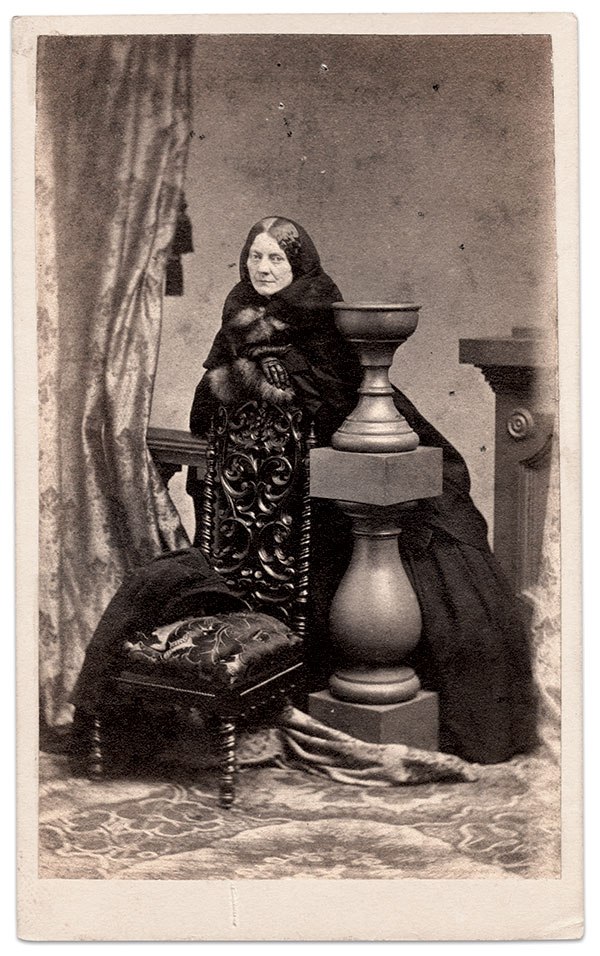By Elizabeth A. Topping, with images from the author’s collection
These images memorialize someone no longer there; someone whom these women loved. Their downcast gazes at the physical absence represented by the empty chair were intended to evoke sorrow, grief, and nostalgia from viewers.
The chair is a symbol of their grief. It reminds observers to remember one who is missing, to feel his or her absence, and to confront the loss. An empty chair in a photograph allowed the family to include their missing companion in the image. It enabled family, friends, and others to recall the face of its former inhabitant.


Though the concept of a vacant chair predated the Civil War, it took on new meaning as a placeholder for soldiers who were far from home. Families unable to recover the remains of a father, son, or brother utilized the empty chair, an object that could be seen, touched, and experienced physically, to come to terms with emptiness, grief and trauma. In place of holding a sweetheart, the chair could be touched as if reaching out to hold an illusory hand, or occupied to imagine a husband’s embrace. By providing a physical connection to the departed, it allowed a mourner to say goodbye. Cemetery statuary served a similar function.
Every woman with a loved one in the military during the war years faced the grim prospect of an empty chair at her dining table. In some households the chair remained vacant for a short time, until its owner, all too often suffering the physical and mental scars of war, returned to occupy it. In other families, it remained forever vacant.
This mourning observance entered American popular culture in late 1861 when a Massachusetts newspaper, the Worcester Spy, published a poem by Henry Stevenson Washburn titled “The Vacant Chair.” Washburn drew his inspiration from the death of 18-year-old John William “Willie” Grout of the 15th Massachusetts Infantry. During the Battle of Ball’s Bluff on Oct. 21, 1861, Confederates drove Grout and a number of his comrades into the Potomac River. Grout drowned. His corpse, along with others, floated downriver to Washington City, and was recovered on November 5.
Washburn’s poem alluded to the empty chair’s tangible link to the soldier who had often sat there:
We shall meet, but we shall miss him,
There will be one vacant chair.
We shall linger to caress him,
While we breathe our evening prayer.
In 1862, George F. Root pirated the poem and published a song of the same title. Its melancholy chords resonated with families. For decades, the song would be sung at veterans’ funerals, and it continues to be performed today.
SPREAD THE WORD: We encourage you to share this story on social media and elsewhere to educate and raise awareness. If you wish to use any image on this page for another purpose, please request permission.
LEARN MORE about Military Images, America’s only magazine dedicated to showcasing, interpreting and preserving Civil War portrait photography.
VISIT OUR STORE to subscribe, renew a subscription, and more.

